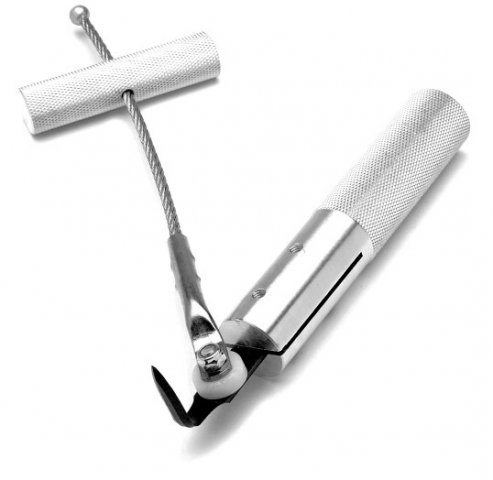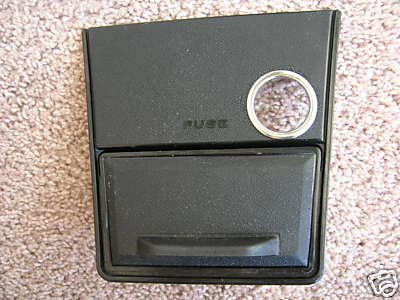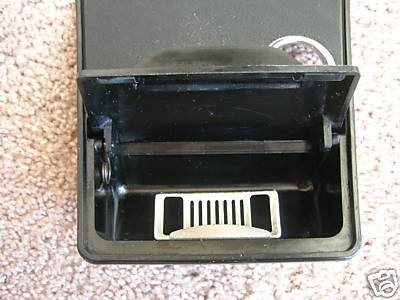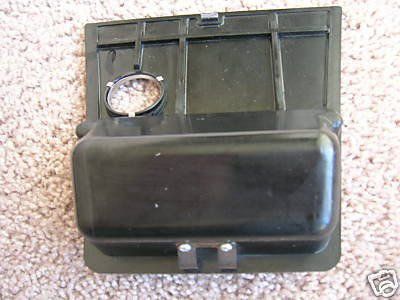-
Posts
820 -
Joined
-
Last visited
-
Days Won
3
Content Type
Profiles
Forums
Blogs
Events
Gallery
Downloads
Store
Everything posted by zcarnut
-
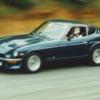
Maxima caliper brackets
zcarnut replied to ComicArtist's topic in Brakes, Wheels, Suspension and Chassis
Yes. Summary: The 1981-82 Maxima's used bracket 44155-N3202 which is dicussed here: http://forums.hybridz.org/index.php/topic/59810-which-maxima-bracket-for-rear-disc-swap-have-seperate-part-s/page__p__548395__fromsearch__1#entry548395 The 1983-84 Maxima's had the welded on brackets and the diesels used the desired 44155-04S10 bracket. The 1985-89 Maxima's used the "flat" (bolt on) bracket. -

Maxima caliper brackets
zcarnut replied to ComicArtist's topic in Brakes, Wheels, Suspension and Chassis
The only 1983-84 Maxima's I have seen with the bolt-on rear caliper bracket (pictured in post #3) were the diesel Maxima's. -

WTB... Early 80's Maxima FRONT SUMP 2.8 block and Oilpan !!!!
zcarnut replied to DatsunRod's topic in Parts Wanted
You should also be able to use the oil pan from the 1977-80 Datsun 810 as well as the oil pan from the 1981-84 Maxima’s. These were all “front sumpâ€. These cars had the 2.4 liter (L24) engine, but their oil pan will fit the L28 block. The Maxima with the L28 was the diesel Maxima (LD28 engine). These are more difficult to locate as Nissan did not build as many. The oil pan used by the diesel has additional “winglets†welded on both sides of the front sump to increase the oil capacity by almost a quart. This is probably to one to use, provided you have chassis clearance for the larger diesel pan. Converting a rear sump block to accept a front sump oil pan involves some machine shop work. You drill and tap bolt the holes in the front oil pickup boss for the new front mounted oil pickup tube and drill a new passage from it to the pickup oil gallery in the block (which runs along side the block). You also have to block off the rear sump pickup gallery with a pressed-in plug and drill a new hole for the dipstick tube at the front of the block (being very careful not to drill into the main oil gallery). Lastly, you need to plug the old dipstick tube. I installed an L28 block into my front-sump 810 several years ago. All the machining work cost me about $100. -

Wilwood 1" master cylinder - grabby brakes?
zcarnut replied to kj280z's topic in Brakes, Wheels, Suspension and Chassis
Did the 2+2 have a higher capacity Master Cylinder? No, it was not needed. The 2+2’s used the same size calipers and rear cylinders as the 2-seaters so the fluid volume displacement is the same. Were they trying to compensate for the additional weight but kept the same master Thus trying to allow more assist with a larger brake booster? Yes, exactly. A heavier car requires more braking force. Does the larger brake booster even provide more assist? Yes. A larger diameter = larger area for the vacuum to act on, thus increasing the pedal force even more than the 7.5†diameter booster. Some brake booster theory: http://www.autoshop101.com/forms/brake05.pdf http://www.classicperform.com/PDFs/BoosterBrakePressureChart.pdf Maybe there was a different reason for it in the 2+2? I've never seen any data that depicts how much assist a given booster provides... have you? Unfortunately, there’s only service info in the repair manuals. I have seen output force vs. input force (or gain curves) for some typical boosters in SAE engineering texts. Similar to these curves: http://www.fte.de/oe_bremssysteme_bremskraftverstaerker_en.FTE -

Wilwood 1" master cylinder - grabby brakes?
zcarnut replied to kj280z's topic in Brakes, Wheels, Suspension and Chassis
There's a simple explanation: The 2+2 (the four seaters) S30 Z cars used the larger booster. -
I agree with Mike C. I would remove the pinion races in the housing, clean them with solvent followed by a blast of air, and re-install them. You may have trapped a tiny piece of debris under one of the pinion races and this would cause one to be slightly askew. Do not over lube them before installation. A very thin coating of lithium grease is all that is required. You should not have torqued the pinion nut to 140 ft-lbs initially. You should tighten the pinion nut lightly (by hand) initially, check (measure) the pre-load with an inch-pound wrench, and then gradually tighten the pinion nut in stages, checking the pre-load as you go. If the pre-load is ever excessive, then STOP. Pre-load will only increase as the pinion nut is tightened. Your initial application of 140 ft-lbs (when the spacing washer is too thin) is may have damaged the pinion bearings. It is not unusual to have to change the pinion pre-load adjusting washer when the pinion bearings are replaced. I have re-built about a dozen R200 and R180’s and three of them required different (new) pinion washers. Note: Use a “regular†nut for the pinion nut when you are checking the pre-load as you may need to remove and install the pinion shaft several times. The stock pinion nut is a true lock nut and should only be used once.
-

Recommendations for good DIY home repair forums
zcarnut replied to calpoly-z's topic in Non Tech Board
Some of my favorites: http://www.familyhandyman.com/ http://www.askthebuilder.com/ http://www.diychatroom.com/index.php http://www.diydoctor.org.uk/forums/ http://www.doityourself.com/ -
There's several HybridZers in our area. We need to start a club!
-
You can use the 1970-73 S30 doors on your 260Z. I have a ’73 door on my 260Z. The only issue is that the inside door handle screws of the earlier doors do not line up with the 260Z interior door handle (remember that they changed the design for the 260Z). You have to drill new holes for the screws, but it’s no big deal. A side benefit is that the earlier doors weigh less than the 260Z doors.
-
The issue with upgrading the 260Z alternator is the damn interlock circuit. It must be disabled before you can remove the regulator. See my write up: http://forums.hybridz.org/index.php/topic/40818-260z-alternator-voltmeter-swap/#entry336351
-

Extended Wheel Studs
zcarnut replied to kamikaZeS30's topic in Brakes, Wheels, Suspension and Chassis
Installing the 50mm studs in the rear may require you to pull the rear hubs. Not much wiggle room with the stub axle in there. -
The S130 windshield sealing is very different than the S30 Z cars so the windshield removal/replacement procedure is likewise different. The early S30 cars used a thick, heavy rubber seal/gasket between the glass and the windshield opening in the body. This was the “classic†method of retaining a car’s windshield. The S130 cars do not have a gasket/seal to hold the windshield in place. They use a thick layer of glass sealant to attach the glass to the body. This is the “modern†method of securing the windshield glass. The trim around the edges of the glass hides the sealant from the sun’s UV rays and must be removed before the glass will come out. The S130’s windshield must be cut out with the appropriate tool. I like using a razor cutter that is attached to a handle and uses a puller to apply additional force needed to cut through the adhesive. It’s not a easy job. Replacing the glass requires a purchase of a caulk-sized tube of sealant which is available at auto body supply stores. The S130 windshield replacement procedure is well documented in the FSM. I suggest reading it.
-

Extended Wheel Studs
zcarnut replied to kamikaZeS30's topic in Brakes, Wheels, Suspension and Chassis
A little cheaper here for the Nismo studs: http://www.mynismo.com/products/?id=2574 $65.00 for 10 of the 50mm and $66.25 for the 60mm. Notice that they have different part numbers for the front and rear studs(!). EDIT: 50mm 240SX studs for $2.00 each: http://www.mysr20.com/product_p/icb-ns-122550s.htm -

Extended Wheel Studs
zcarnut replied to kamikaZeS30's topic in Brakes, Wheels, Suspension and Chassis
There were two different length wheel studs used on the S30 Z cars: the fronts were 32mm long and the rear ones were about 40mm long. The rears had to be longer because of the brake drum which slid over the studs. You can use the rear S30 wheel studs in the front hubs. The 240SX wheel studs will work on the S30 Z cars but they are only about 1mm longer than the stock rear S30 ones. In fact the Dorman replacement part number for both is the same: 98355 or 610320. Dorman 98355 or 610320 specs Type: Serrated Stud Thread: M12-1.25 Knurl Dia: 12.83mm Length: 41.5mm Shoulder Length: 14mm I recommended the Quest studs because they are 45.5mm long and have the same threads M12-1.25 as the S30 studs and they are readily available. However, if you have a source of S13/S14 wheel studs that are longer than 45.5mm, then let’s hear about it. -
Finally, a legible S30 on line parts catalog! http://www.carpartsmanual.com/datsuns30/DatsunFairladyZIndex/tabid/1543/Default.aspx
-
Just scanned this bit of service info. Datsun Torque Specifications.pdf
-
My 2/70 240Z had the original black case Yuasa battery when I bought it. I still have the battery somewhere stored in my garage. I‘ll look for it and post some pictures. I agree with what uwhusky89 stated. The experts at classiczcars.com should be able to answer your questions.
-
The 1970-71 ashtray (the series one or series two are about the same) is different than the ashtray used in the later S30 Zcars.
-
Watch out for the center hole diameter in the wheel. The S30 cars need an inside diameter of 3 inches (~75mm) to clear the bearing protrusion on the front hub. If you do not have this clearance then the wheel will not fit flush on the hub and this can result in several problems, and is not safe. I have had to increase this opening on several aftermarket wheels to get them to correctly fit on the S30 cars.
-
All the 1977-80 810 steering columns are interchangeable, regardless of body type. However the two-door coupe doors are unique so you will have to locate a 1979-80 two-door junker for the passenger door.
-
I don’t recall the TWM throttle body had any indentifying markings.
-
There were two 60mm aftermarket throttle bodies. The original one made by Weber and a later copy made by TWM. Although the TWM one has the thinner throttle blade it was not as well made as the Weber one and if you bought a new one you had to re-use your ultra-fine pitch idle adjust screw. Unfortunately the later TWM one is also referred to as a "Weber Big Throat".
-
We’ve got an A-12 here in Huntsville parked in front of the Space and Rocket Center which is easily visible from the interstate highway. More reading on SR-71’s and A-12’s: http://www.johnweeks.com/sr71/index.html
-
Was this for an early Z car? The site you listed does not show any metric compression fittings (only metric O-ring fittings). I would think the female O-ring fittings would leak if you attempted to mate them with male compression fittings.


